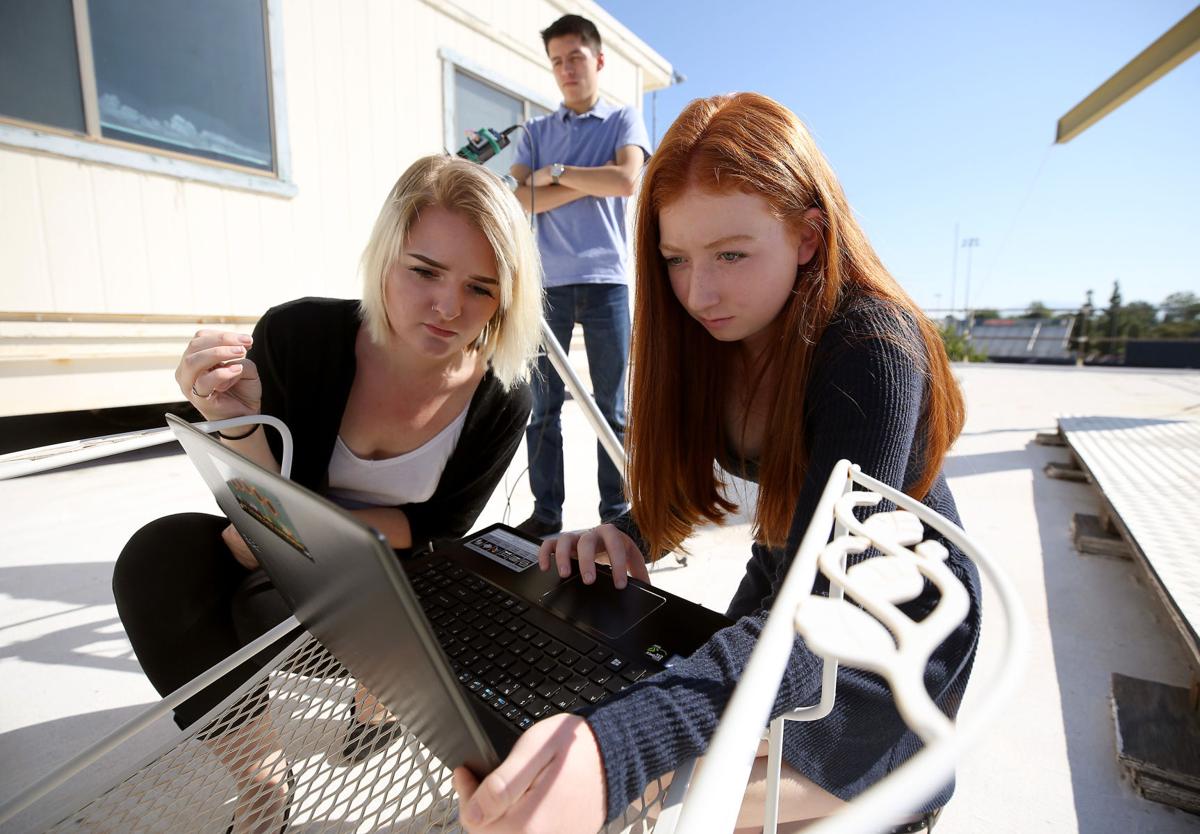Daniel Stelly, a senior from Cienega High School, had his fingers pressed against a knob on the telescope mount like he was taking a pulse. He was hoping to feel the ticking of the motor that tracked the arch of the sun across the sky.
“It’s working,” he yelled from the rooftop of the National Optical Astronomy Observatory at the University of Arizona.
Stelly and two other Vail School District students on the roof that day, Savannah Shoffner, a Cienega junior, and Mariah Harding, a Pantano High senior, shadowed Matt Penn, National Solar Observatory astronomer, as part of a graduation requirement.
Penn tasked the three students with helping him build a simple pointing system for the sky brightness detector on the Daniel K. Inouye Solar Telescope in Hawaii.
The telescope will outperform the current leading ground-based solar telescope in the world — the McMath-Pierce on Kitt Peak, about 50 miles southwest of Tucson. The Inouye telescope will collect 10 times the amount of light, Penn said, revealing more information and detail on the sun.
Penn and his students wanted to build a pointing system using off-the-shelf technology. The pointing system will be used to look at the area closely surrounding the sun, including the corona, to help astronomers determine sky brightness.
Sky brightness can be affected by factors including dust, moisture and altitude. If the sky is bright, then astronomers would prefer to look at the sun that day. If it’s not so bright, they’d want to study the corona.
Typical pointing systems use motors that turn the telescope and count the amount of rotation which gives them the position in the sky. “Based on the number of turns on the motor axis you can determine where your mount is pointing,” Penn said.
Penn instead wanted to use an accelerometer, a small chip about the size of a memory card that is used in smartphones to determine orientation or tilt of the device. A good example of it’s use is for constellation viewer apps. Users hold their phones up to the night sky, and depending on the phone’s orientation, different views of the sky are visible.
“An accelerometer,” what Penn experimented with, “doesn’t have to count anything, it just uses magnetic field (to determine direction) and gravity to determine the pointing (or angle of the sun in the sky compared to the horizon).” With those two pieces of information, astronomers pinpoint the sun’s location in the sky.
Plus, it’s cheaper. Accelerometers cost about $8 at most electronics stores. Stepper motors can cost hundreds of dollars.
Penn wanted to test if the accelerometer method was accurate enough to replace motorized pointers. So he and the students strapped the accelerometer and the motor to the telescope mount with the intent of comparing each device’s performance for accuracy.
“I got the idea from people in eclipse experiment, some are really advanced amateur astronomers,” Penn said.
On Tuesday, the three students soldered the accelerometer to a palm-sized computer, called an Arduino, encoded with directions for taking data. The final product was a small brick of electronics and a tangle of wires.
Now, “I can do (coding), but I don’t like it,” Stelly said, bemoaning the perfection coding requires. Ironically, Stelly was the one who spent the next morning recoding their devices.
The next morning, they were in the sunny courtyard of the observatory testing their creations in real time on a telescope mount. This meant a lot of sitting and waiting as their laptops collected data from both forms of pointers.
“This is exactly what I aim for,” Penn said. “If I’m bored, things are going well.”
But later that day, things weren’t going so smoothly. They realized their accelerometer was recording the wrong parameters.
By the third and last day of their required time with Penn, the students recoded their devices and set up their mounts on the roof of the observatory for testing.
Their endeavors were stunted by mechanical problems and high temperatures, but without hesitation, they got to work. “We don’t have a teacher to tell us what to do. We have to figure it out alone,” Harding said with satisfaction.
They didn’t end up figuring out exactly what went wrong, but they knew the accelerometer still wasn’t tracking right.
“It was a lofty goal,” Penn said, but nonetheless he must finish his instrument for Inouye telescope. “All the kids are interested in continuing the work. They’re taking the data here and we’ll work on final analysis via email.”
Even with college applications around the corner, all agreed they would like to continue working on the project after their shadowing hours were completed. “I feel like I’m contributing to something bigger,” Stelly said.





